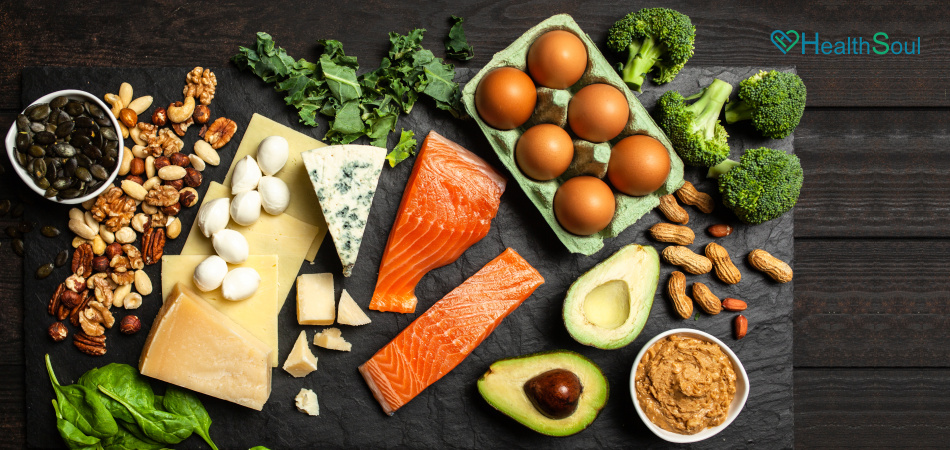How Safe Is Keto Diet?

The ketogenic diet pertains to a low-carb diet in which you get more calories from fats and proteins rather than carbohydrates. In essence, you must avoid eating foods and beverages with refined sugars such as white bread, pastries, and soda. But how safe is the keto diet? This article will discuss the safety and risks of maintaining a keto diet.
Ketosis And Ketoacidosis
Ketosis, a metabolic process, occurs when the body is deprived of glucose to convert into energy, forcing it to burn stored fats instead. The byproduct of ketosis are ketones. If your body experiences ketosis, ketone levels in your blood and urine increase.
Nutritional ketosis is generally safe, which is the goal of a ketogenic diet. On the other hand, ketoacidosis is life-threatening and may be a dangerous complication for people with diabetes. Ketoacidosis happens if ketone levels in your body become too high. If you have diabetes, it is best to avoid keto diets and follow your doctor’s advice to prevent complications due to ketoacidosis.
Good Ketones
People need an energy boost for mental clarity, especially in the morning, afternoon, and before intense physical activities. And this is when you can consume exogenous ketone supplements such as BHB Exogenous Ketones.
Beta-hydroxybutyrate (BHB) is naturally found in the body when fats turn to ketones and are utilized as energy. Exogenous ketones or ketone supplements provide the body with ketosis support to burn adequate fats, fueling the body even in the absence of glucose.
Target Ketone Levels To Attain Weight Loss
When you’re on a keto diet, the typical blood ketone levels range from 0.5 to 3.0 mg/dL, which is considered the optimal range to attain nutritional ketosis and weight loss. The body in nutritional ketosis utilizes stored fat in the abdomen and tissues for energy which helps boost fat loss and weight loss.
Keto And Cardiovascular Health
Following a keto diet food guide is a great way to keep a safe and healthy lifestyle. This requires you to eat less than 50 grams of carbohydrates per day, maintaining moderate protein intake, and increasing fat consumption to 65 to 80% of calories.
It’s crucial to exclude high-carbohydrate foods and replace them with low-carbohydrate and high-fat keto diet staples. But people with a history of cardiovascular problems should be careful in choosing keto food sources. Keto entails obtaining energy from fats, but not all fats are equal.
If you have a history of cardiovascular health issues, here are a few things to take note of before you follow a keto diet:
- Heart Disease Risk: Consuming excessive saturated fats, such as the ones found in red meat and fast food, increases the risk for atherosclerosis or deposit of fat plaques in the arteries, which causes coronary disease and heart attack. Hence, the keto diet increases the risk of cardiovascular disease if the condition runs in the family.
- Cholesterol Levels: One concern about taking a keto diet is its effect on cholesterol levels. In some studies, it is found that cholesterol may spike on the onset of a keto diet. However, the levels decrease after a few months of being on the diet.
Keto Flu
Keto flu refers to a constellation of symptoms one may feel after following a keto diet. It’s characterized by fatigue, headache, lightheadedness, nausea, and constipation, resulting in the rapid excretion of fluids and sodium because of restricted carbohydrate intake and depletion of glycogen stores.
To restore electrolyte balance, it’s important to increase sodium intake by 1 to 2 grams per day. Here are some effective ways to combat keto flu:
- Stay Hydrated
- Get Plenty of Sleep
- Avoid Strenuous Activities
- Eat Enough Fat Sources
- Cut Out Carbs Gradually or Slowly Over Time
Smooth Transition To Keto Diet
The key to avoiding keto flu and abrupt increase in the body’s ketone levels is to make sure that the transition towards a keto diet is as smooth as possible. In other words, you shouldn’t make a swift change. Rather, you must slowly minimize carb consumption until it reaches the bare minimum. This way, your body can gradually adjust to the changes. You can use an app to track your carb intake as this will help you transition more safely.
Remember that it will take about two to four days for your body to enter ketosis if you consume fewer than 50 grams of carbohydrates per day. This may take longer because of your age, metabolism, physical activity level, and fat and protein intake.
Conclusion
Ketogenic diets are generally safe because the aim is to achieve nutritional ketosis through the reduction of carbohydrate intake. Unlike life-threatening ketoacidosis that occurs among type 1 diabetics, any healthy person can be on a keto diet without worrying about high ketone blood levels in the body. However, for people with diabetes and a history of heart disease, it’s best to seek medical consultation before taking any type of diet—including the keto diet.

